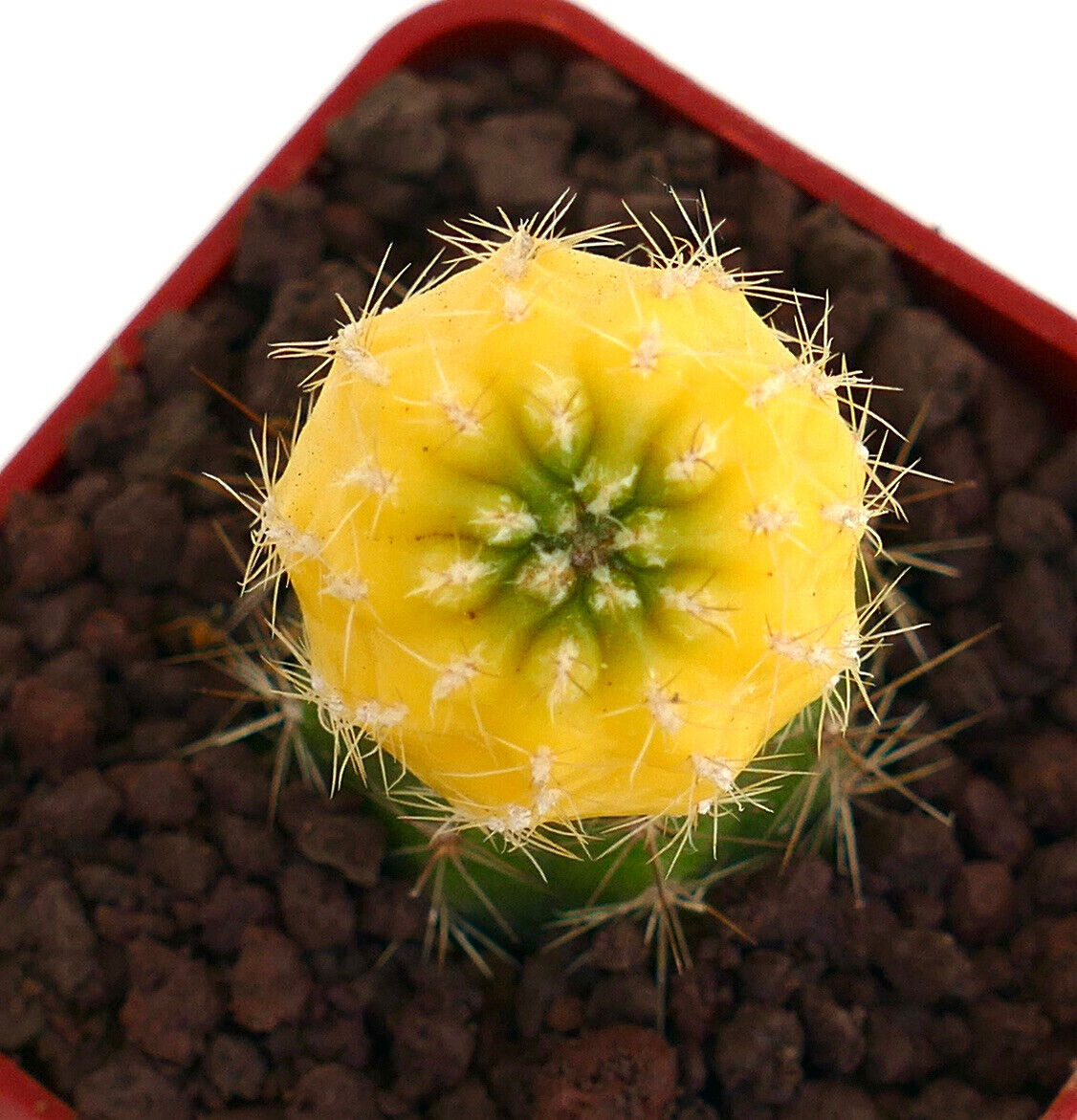Variegated forms of cacti, including Matucana polzii, are quite sought after for their unique aesthetic appeal. Variegation in cacti refers to the occurrence of two or more different colors in the leaves or stems of the plant, often in stripes, spots, or patches. This can be due to genetic mutations, environmental factors, or viral infections, with genetic variegation being the most appreciated and stable form for cultivation. Variegated Matucana polzii would exhibit areas of different pigmentation, typically along the ribs or around the areoles, contrasting with the normal green color of the cactus.
Description of Variegated Matucana polzii
-
Appearance: In addition to the standard features of Matucana polzii, variegated specimens will have patches or streaks of white, yellow, or sometimes even pinkish hues against the usual green background. These colors indicate areas where chlorophyll is absent or reduced.
-
Growth: Variegated plants often grow more slowly than their non-variegated counterparts because the areas lacking in chlorophyll cannot photosynthesize as efficiently. This can make them more rare and desirable among collectors.
Cultivation Tips for Variegated Matucana polzii
Variegated cacti require a bit more care than their non-variegated versions, primarily because their reduced chlorophyll content makes them less vigorous and sometimes more sensitive to environmental conditions.
-
Light: While all cacti require good light to thrive, variegated types may need protection from the most intense sunlight to prevent sunburn, especially on the lighter parts of the plant that are more prone to damage.
-
Water: Variegated Matucana polzii should be watered with care, allowing the soil to dry out between watering to prevent rot. Overwatering is a common mistake that can be particularly detrimental to variegated plants.
-
Soil: Use a well-draining cactus mix to ensure that excess water can drain away quickly.
-
Temperature: They prefer the same temperate range as non-variegated types but be mindful during extreme temperatures, as stress can exacerbate sensitivity in variegated plants.
-
Location: Choose a location where the plant can receive plenty of bright, indirect light. Direct morning sun can be beneficial, but hot afternoon sun might need to be filtered or shaded.
-
Propagation: Variegated plants can be propagated from seeds or offsets like their non-variegated counterparts, but it's important to note that variegation may not always come true from seeds. Offsets have a higher chance of retaining the variegated patterns.
Because of their unique appearance and the added care they require, variegated Matucana polzii plants are especially prized among collectors and enthusiasts. If you manage to acquire a variegated specimen, providing the right conditions will be key to enjoying its distinctive beauty.
Tha plant for sale as shown in the pictures is grafted on Cereus sp..












